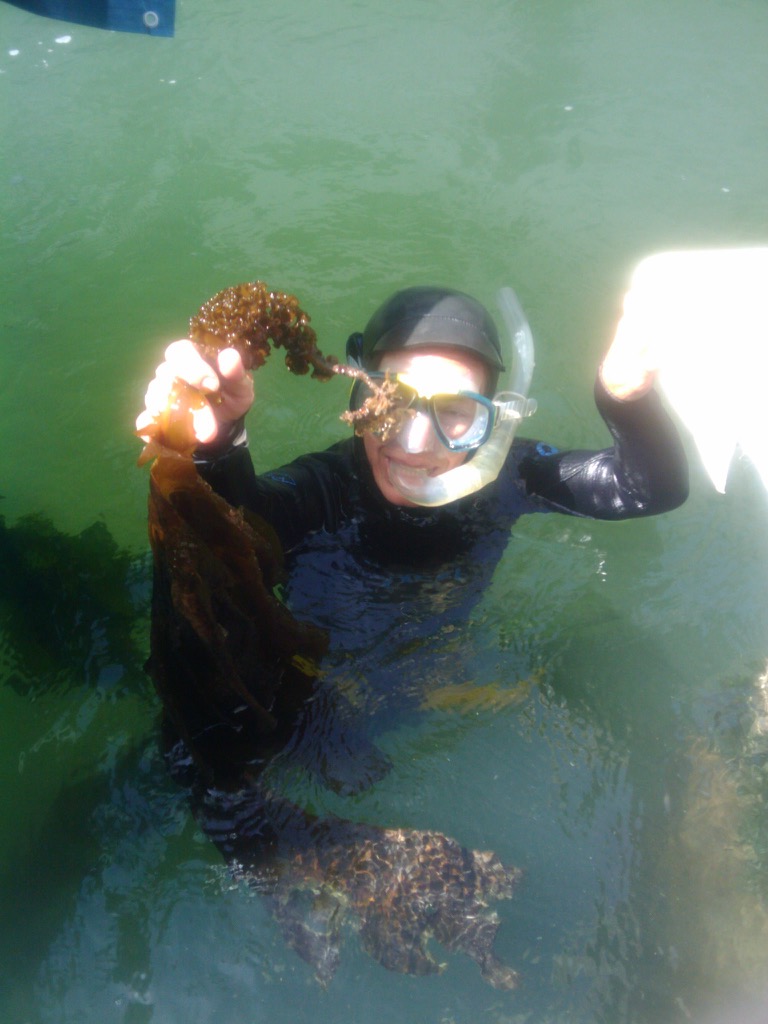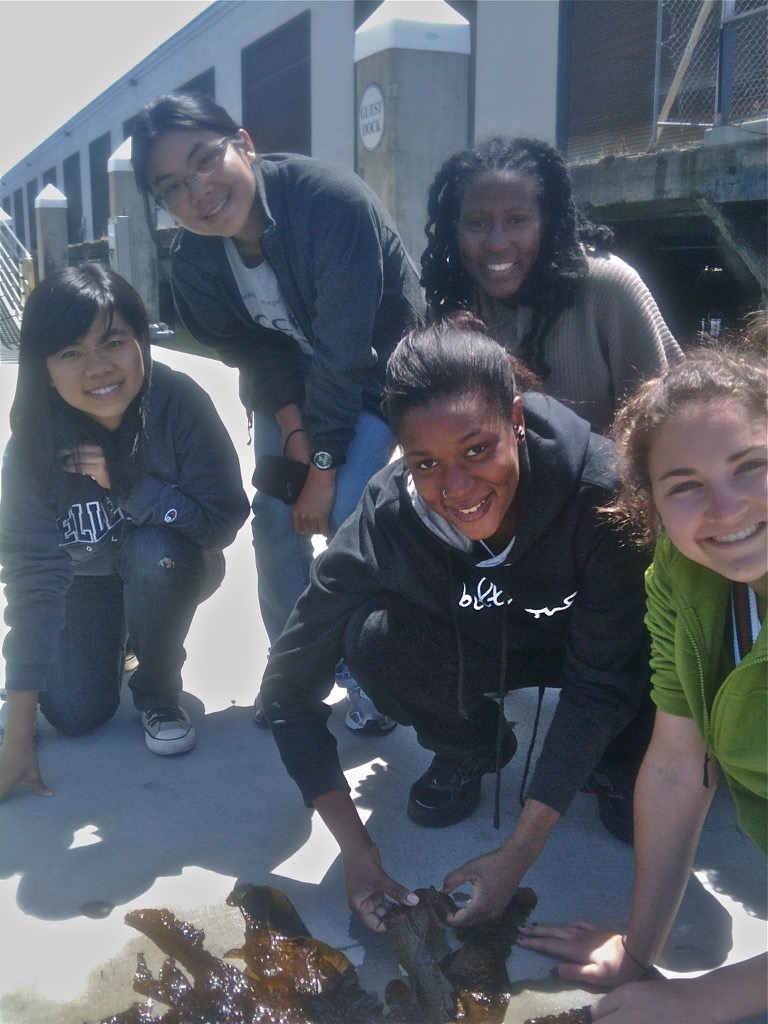
The kelp Undaria pinnatifida is a newcomer to the West Coast. Over the last 15 years it has invaded Southern and Central California, including San Francisco Bay, and it could spread as far as Southeast Alaska. This aquatic plant grows very quickly and is spread by boats, anchors, floats, and aquaculture gear. It competes with native seaweeds for space, light, and resources.
Undaria is invasive, which means it has been transported from its native home and is harming the new environment. Not all foreign species are invasive, some get along very well in new places with new neighbors. However, Undaria is a hazard to the places it invades, and we need your help reporting new sightings! By spotting Undaria early, we can prevent the spread of this harmful plant. Surfers, scuba divers, kayakers, tide poolers and fishermen and others enjoying the coast can all assist by keeping an eye out for Undaria on rocky shores, kelp forests, harbors, and marinas. You can also help by inspecting your boat and slip and removing Undaria if you find it.
If you find Undaria…
- Remove the kelp by grasping it near the bottom (closest to where it is attached.)
- Remove it from the water immediately. Do not let water run off the kelp back into the ocean.
- Take a photograph.
- Note the location and details (i.e. slip number if in marina.)
- Do not throw what you think may be Undaria back into the water.
- If possible, keep the plant in a plastic bag, and keep it cool.
- If possible, press the plant within 2-3 days.
Report suspected Undaria here or email us your sighting information at zabinc@si.edu.
History

Undaria was first spotted at the Los Angeles-Long Beach Harbor in 2000. It became established in Monterey Harbor in 2001, and for 8 years, that was its northernmost extent. However, in 2009, we found small populations at Pillar Point Harbor in Half Moon Bay and at 2 sites in San Francisco Bay. It has since spread to multiple locations within San Francisco Bay. Based on its environmental tolerances, we know that Undaria live from Southeast Alaska to Baja California.
Want to get involved?
This is a monitoring activity, so this project is mostly driven by volunteers. If you are interested, click here to learn more.
